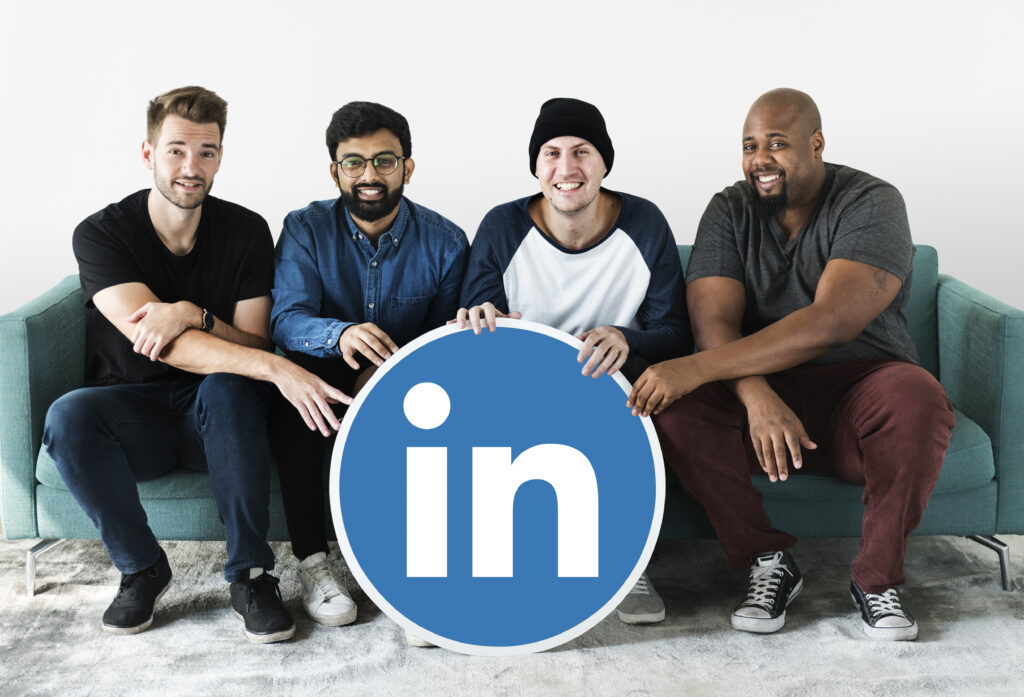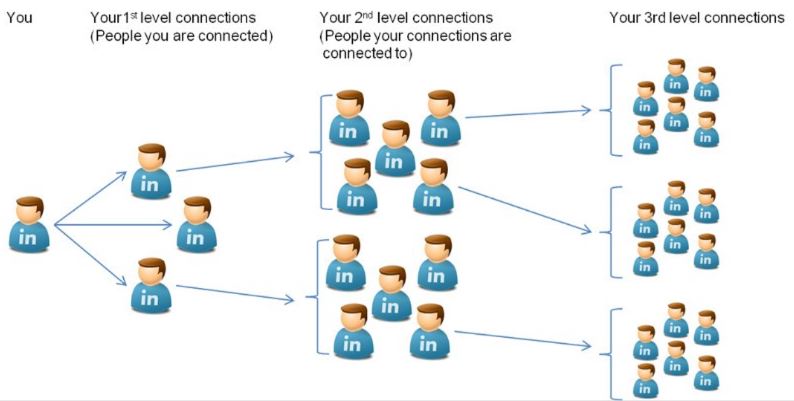LinkedIn connections offer unparalleled opportunities for career growth, business development, and personal branding. At the heart of this network are the connections you build, classified into 1st, 2nd, and 3rd degrees. Understanding these connections and how to leverage them can significantly enhance your networking strategy. In this article, we will delve into the intricacies of LinkedIn connections and explore how you can maximize their potential.

Understanding the Basics of LinkedIn Connections
LinkedIn connections form the foundation of your professional network. They are the links between you and other professionals on the platform. The nature of these connections determines how you can interact with them and how visible you are to each other.
LinkedIn Connections
Connections on LinkedIn are categorized into three degrees: 1st, 2nd, and 3rd. Each degree represents a different level of familiarity and interaction potential. These categories help users understand their relationship with other professionals and strategize their networking efforts accordingly.
LinkedIn Network
Your LinkedIn network is a dynamic and evolving entity. It includes all your connections and their connections, creating a web of professional relationships. This network can be a powerful resource for job searches, business opportunities, and knowledge sharing.
LinkedIn Contacts
Contacts on LinkedIn are individuals you are directly connected with (1st-degree connections) or those who are connected to your connections (2nd and 3rd-degree connections). Managing these contacts effectively can open doors to new opportunities and collaborations.
LinkedIn Relationships
Building and maintaining relationships on LinkedIn is crucial for long-term networking success. These relationships can range from casual acquaintances to close professional allies. Understanding the nature of your relationships helps in tailoring your approach to networking.

1st Degree Connections: Your Inner Circle on LinkedIn
1st Degree LinkedIn
1st-degree connections are your direct connections on LinkedIn. These are the people you have invited to connect or who have invited you, and you have accepted their connection request. They form the core of your LinkedIn network.
Direct LinkedIn Connections
Direct connections are valuable because they provide immediate access to their profiles, allowing for direct messaging and engagement with their posts. These connections are typically colleagues, clients, business partners, or friends.
LinkedIn 1st Degree
The 1st-degree connection is the most intimate level of connection on LinkedIn. It signifies a mutual agreement to connect and interact professionally. These connections are the easiest to engage with and can provide immediate support and opportunities.
People You Know on LinkedIn
Your 1st-degree connections are essentially the people you know well enough to have established a direct connection. These individuals are often the first to see your updates, endorse your skills, and recommend you to others. They play a crucial role in your professional journey.
2nd Degree Connections: Expanding Your Reach Through Friends of Friends
2nd Degree LinkedIn
2nd-degree connections are individuals connected to your 1st-degree connections. These are essentially friends of friends. While you may not know them personally, you share a mutual connection, which can be leveraged to expand your network.
LinkedIn 2nd Degree
Engaging with 2nd-degree connections involves reaching out to people who are connected to your direct contacts. This can be done through introductions from mutual connections or by directly sending a connection request with a personalized message.
Connections of Your Connections
2nd-degree connections are valuable because they represent a wider network of professionals who are potentially accessible. They offer a bridge to new opportunities and insights that may not be available within your immediate circle.
Friends of Friends LinkedIn
Leveraging your friends of friends on LinkedIn can significantly enhance your networking efforts. By tapping into this extended network, you can discover new prospects, partners, and mentors who can aid in your professional growth.
3rd Degree Connections: Tapping into a Vast Network of Opportunities
3rd Degree LinkedIn
3rd-degree connections are individuals connected to your 2nd-degree connections. These connections are three steps removed from you, representing a broader and more diverse network.
LinkedIn 3rd Degree
Engaging with 3rd-degree connections can be more challenging as you do not share a direct or mutual connection. However, with a strategic approach, these connections can be unlocked to reveal a wealth of opportunities.
Connections of Connections of Connections
The 3rd-degree network is vast and encompasses a wide range of professionals from different industries and regions. This extended network can be a goldmine for finding potential leads, collaborators, and knowledge sources.
Extended LinkedIn Network
Your extended LinkedIn network, including 3rd-degree connections, offers the potential for exponential growth in your professional relationships. By exploring and engaging with this network, you can uncover new opportunities that can propel your career forward.
Navigating the LinkedIn Connection Hierarchy: Tips and Strategies
How to Manage LinkedIn Connections
Managing LinkedIn connections effectively involves understanding the hierarchy and tailoring your approach for each connection level. Regularly reviewing and organizing your connections ensures that you are engaging with the right people and maximizing your network’s potential.
LinkedIn Connection Types
LinkedIn connection types—1st, 2nd, and 3rd degrees—each require different strategies for engagement. Understanding these types helps in crafting personalized messages and requests, leading to more meaningful and productive interactions.
LinkedIn Connection Levels
Each connection level on LinkedIn offers unique advantages. While 1st-degree connections provide direct engagement opportunities, 2nd and 3rd-degree connections expand your reach and potential for discovering new prospects. Balancing your efforts across these levels is key to a robust networking strategy.
LinkedIn Network Building
Building a strong LinkedIn network involves a combination of connecting with familiar contacts and reaching out to new ones. Engaging with your connections through regular interaction, endorsements, and sharing valuable content helps in nurturing these relationships.
How To Bypass LinkedIn’s Limitations And Go Beyond Your 1st-Degree Network
LinkedIn only lets you directly interact with 1st-degree connections, but there are many opportunities outside your network you want to pursue. LinkedIn has implemented certain restrictions recently to maintain the quality and relevance of content shared by its users. One such limitation is the weekly posting limit, which can be frustrating for those who rely on the platform to share their expertise and connect with their audience.
But we got you covered, exploring tips and techniques that will enable you to overcome the LinkedIn weekly posting limit and maintain a consistent, impactful presence on the platform.
Here are few hacks to bypass LinkedIn’s Limitation
How many times have you noticed a 2nd, or 3rd-degree connection that would be a great lead, candidate, or investor… and you wanted to extract that data to reach out but also want to automate the whole process? Introducing Golden Leads…
One-Stop Solution from Waterfall Email Enrichment to Waterfall Email Validation: Golden Leads
Golden Leads offers a comprehensive solution that simplifies the waterfall lead enrichment process. Here’s how Golden Leads stands out:
- Consolidation of Top Data Providers: We consolidate data from leading vendors to provide unmatched real-time and accurate data enrichment. This eliminates the need to juggle multiple sources, ensuring a seamless and efficient process.
- Precise Information for Personalized Outreach: Our lead enrichment services deliver precise information that enables personalized outreach. This transforms ignored messages into meetings without the need for manual data sorting or extensive email checks.
- Instant Email Validation: After enriching your data, Golden Leads instantly validates your email list. This enhances deliverability and protects your sender reputation, ensuring your outreach efforts are ready to go immediately.
- Lead Management Platform: Our platform helps you reach your target audience directly, risk-free, with accuracy, and at scale. Spend less effort with everything in one place and supercharge your campaigns.
Conclusion: Unlock the Power of Your LinkedIn Connections: Start Networking Today!
By understanding the intricacies of 1st, 2nd, and 3rd-degree connections, you can unlock the full potential of your network. Whether you are seeking job opportunities, business partnerships, or industry insights, your LinkedIn connections are a powerful resource.
Golden Leads offers the tools and services you need to enhance your LinkedIn strategy. With their LinkedIn Data Scraper, Waterfall Enrichment, and Validation services, you can ensure that your connections are not only relevant but also valuable. Start leveraging your LinkedIn connections today and watch your professional network flourish. For companies looking to enhance their lead generation efforts, Golden Leads provides the edge you need. Try Golden Leads today and unlock a world of opportunities through your LinkedIn connections.
